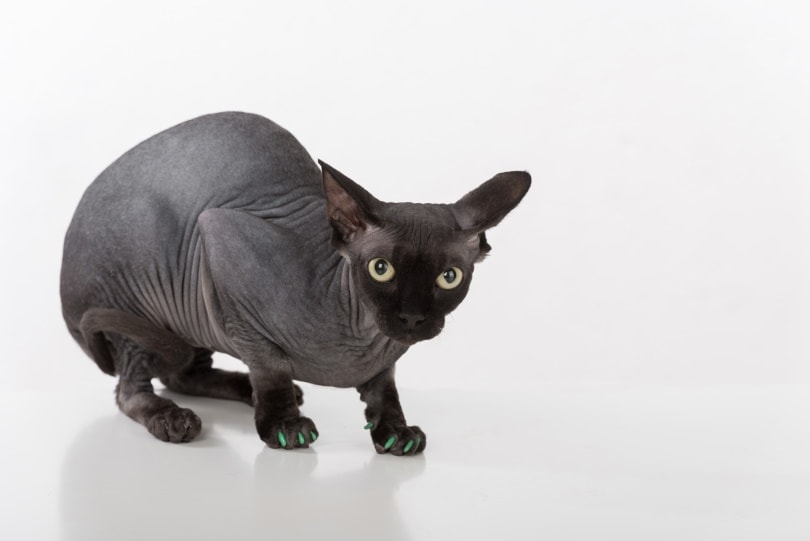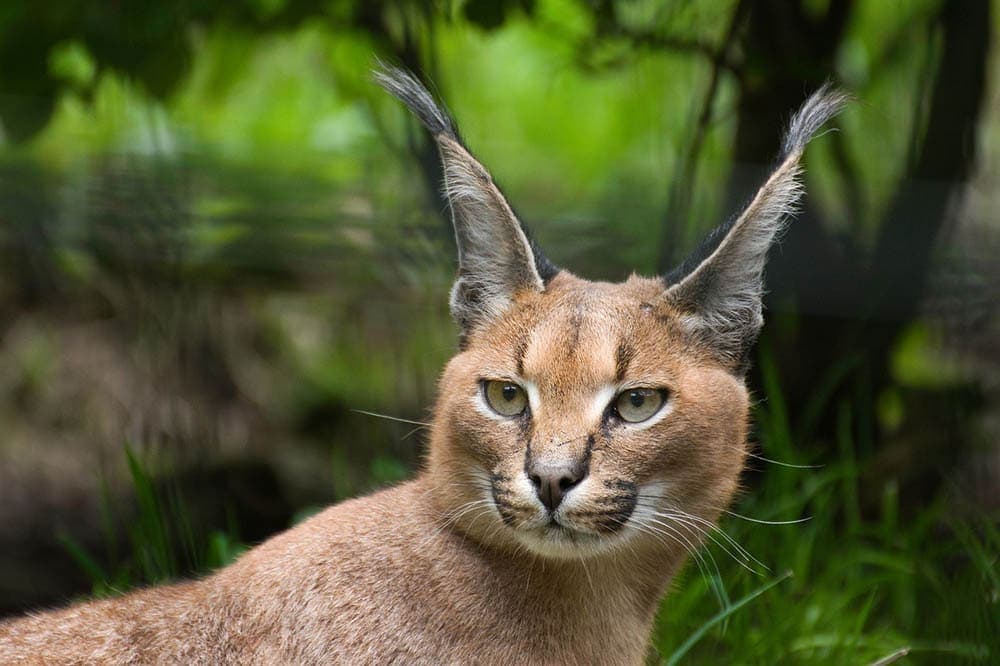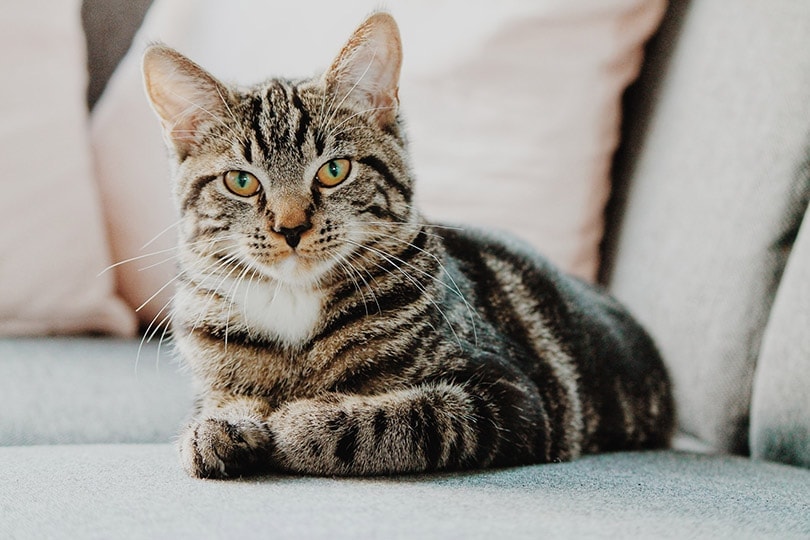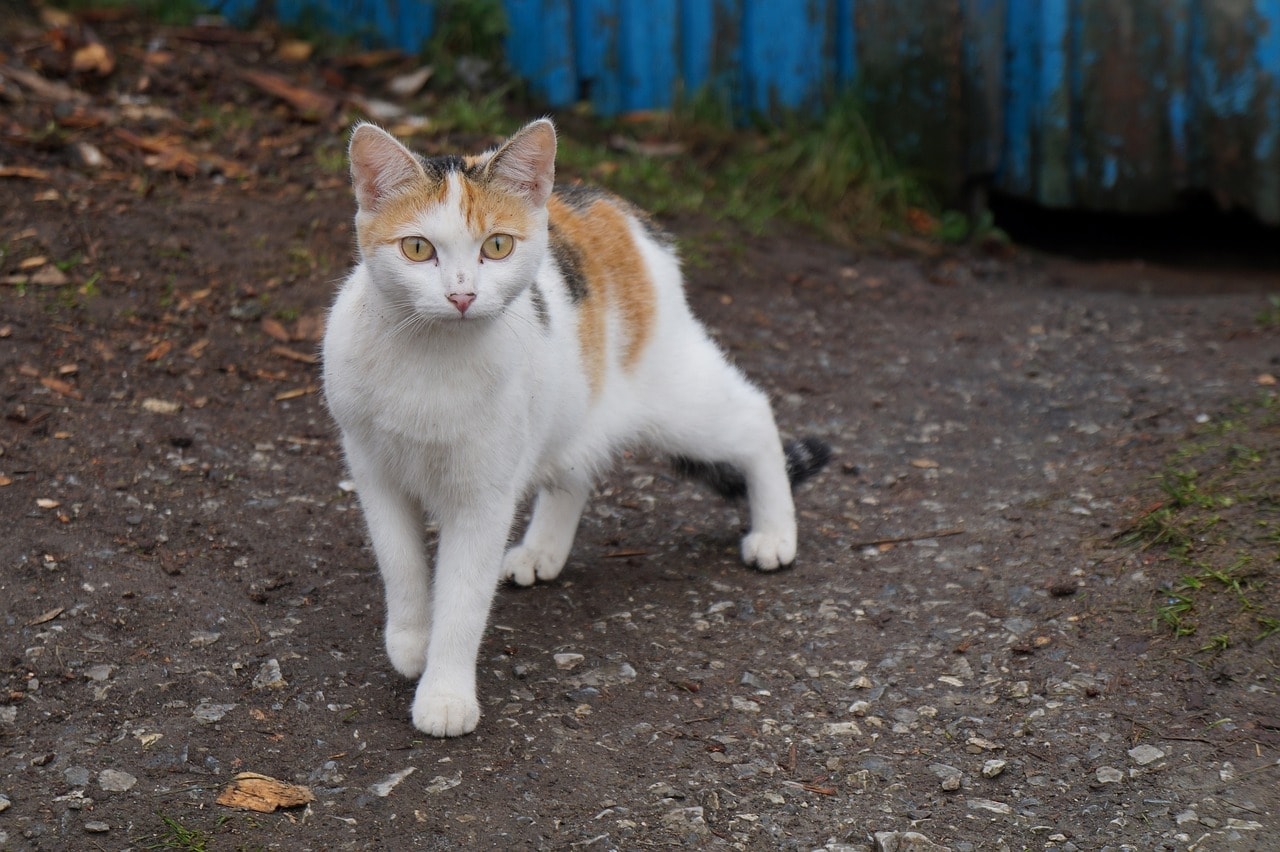Pumpkin is often touted as a healthy and natural treat for cats. In fact, some claim that it has a host of health benefits. It even appears in various healthy foods. However, the science is a bit more complicated than that.
Luckily, cats can eat pumpkin safely. It may have minor health benefits for some cats when fed in small amounts. However, that doesn’t mean that you should feed your feline tons of pumpkin. Pumpkin does not meet a cat’s nutritional needs.
In this article, we take a look at the claims of why pumpkin may be a good additive for your feline, as well as what can happen if you feed your cat too much pumpkin.
What Are the Health Benefits of Pumpkin?
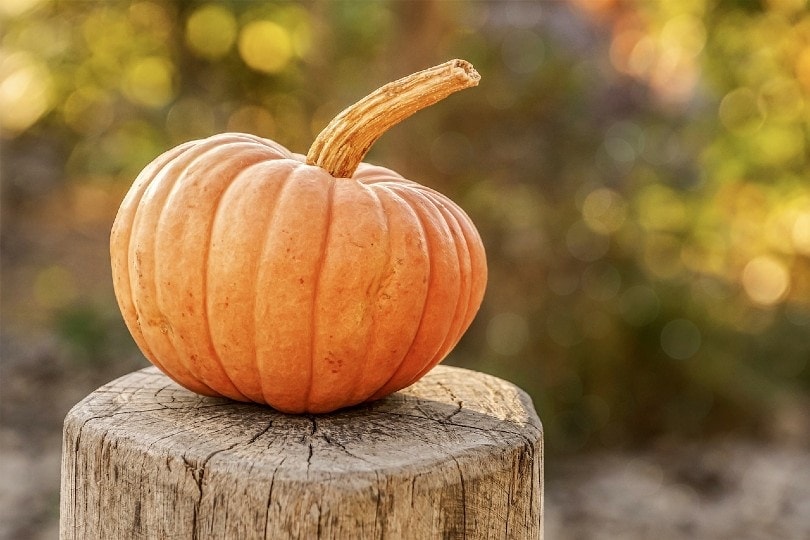
Pumpkin is often used in different cat foods and treats, usually with several benefits attributed to them. However, the benefits that it provides really depend on your cat. Sometimes, cats with certain health problems may benefit from pumpkin because it adds something that they need. If your cat is already healthy, pumpkin probably isn’t going to help much.
One of the main benefits of pumpkin is the high amount of fiber that it contains. If your cat has certain digestive problems, like constipation, adding pumpkin may be a suitable option. Many digestive cat foods include pumpkin for this reason.
Pumpkin may also help obese cats. The fiber adds bulk to the diet, making the cat feel fuller for longer. If your cat is on a diet, pumpkin may prevent them from complaining quite as much about their new diet.
This additive is also a good source of vitamins A and C. However, there are usually other, easier options for improving your cat’s intake of these vitamins. Both vitamins are important for supporting your cat’s vision and their immune system, but cats are usually not deficient in these unless they aren’t eating a complete diet. Therefore, the benefits of these vitamins from pumpkin are usually lost for most cats. They already have all that they need.
Pumpkin is also a decent source of zinc. However, most cats don’t need more of this either. It may help improve your cat’s skin and coat, but extra zinc isn’t going to do anything.
We generally don’t recommend trying to use pumpkin as a vitamin supplement without speaking to your vet. Most of the time, it simply isn’t needed.
What Are the Potential Risks of Pumpkin?

In most situations, pumpkin is safe and easy to add to your cat’s food. It will typically not upset a cat’s digestive tract.
The problems come when you try to feed your cat too much pumpkin. If your cat eats too much, it can edge out other foods that your cat also needs. It should never replace your cat’s main diet, as this is where they should receive the bulk of their nutrition. They also shouldn’t be gaining any weight from the calories that the pumpkin inevitably adds. For this reason, the amount of pumpkin that they should be eating is small.
Large amounts of pumpkin can cause digestive upset. This usually includes stomach cramps and diarrhea. If this occurs, you should likely skip the next serving and change the amount of pumpkin that you’re offering. Diarrhea is often not serious. However, chronic diarrhea can be. It can quickly cause dehydration.
You shouldn’t feed your feline every part of the pumpkin either. The stem, skin, and pulp of the pumpkin have little nutritional value and aren’t particularly helpful for your cat. In fact, they may be the opposite of helpful if your cat stops eating other foods because they are eating these parts of the pumpkin.
You should also avoid feeding your cat any pumpkin that has been left to sit out, including those that you have carved. These are often over-ripe or rotten, which can make your cat sick.
What Kind of Pumpkin Can Cats Eat?
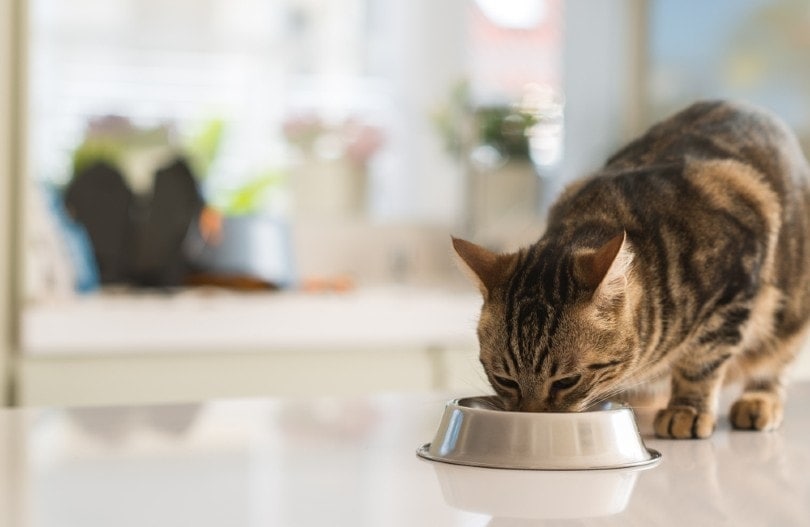
Pumpkins come in many shapes and sizes. However, the only one that your cat should eat is canned pumpkin. It should be unsweetened, as extra sugar is not necessary for your feline. In fact, added sugar can cause all sorts of problems, including obesity and tooth decay.
Be sure to check the ingredient list before purchasing the pumpkin for your cat. It should just contain pumpkin and nothing else. Check the sugar content as well. It should have 0 grams of added sugar.
It may take a bit of looking to find the right kind of pumpkin for your feline. However, this is necessary if you’re planning on adding pumpkin to your cat’s diet. Other types of pumpkins won’t help your cat. Instead, they’ll cause problems.
How to Give Pumpkin to a Cat
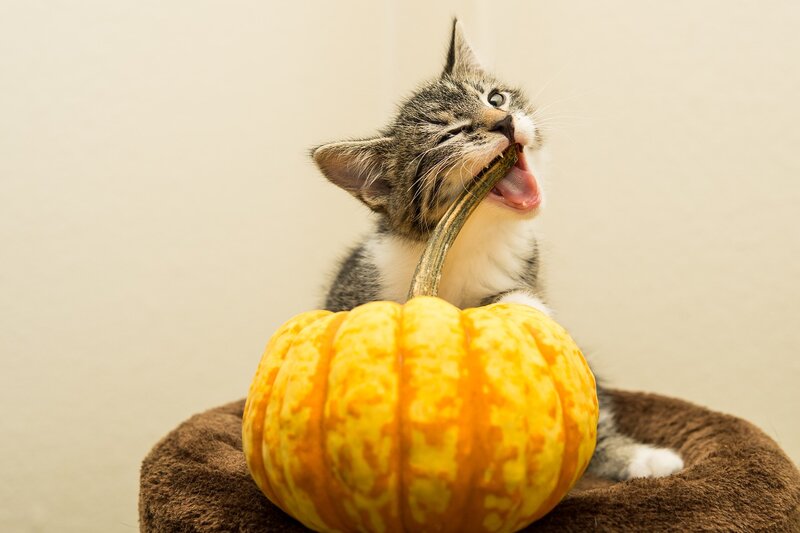
Luckily, most cats like pumpkin. You can simply scoop out the required amount and add it directly to their food. Most cats will happily lick it up as they eat. This makes it probably one of the easiest additives to give your feline, as it doesn’t require much prep.
Of course, every cat is an individual. Your cat may not like pumpkin. Again, you shouldn’t choose pumpkin with added flavors or sugar, even if your cat doesn’t seem to like regular pumpkin. Instead, you may want to try feeding your cat a tiny amount of regular pumpkin and slowly increasing that amount as they accept it. Some simply don’t like eating pumpkin until they get used to the flavor.
Usually, the dosage is between 1-4 teaspoons a day, one to two times a day. However, what you’re trying to achieve and your cat’s size does matter. Some felines need more pumpkin, while others need less. Speak to your vet about the specific dosage that your cat needs to thrive.
If your cat absolutely refuses to eat pumpkin, there are many alternatives. These include psyllium and wheat bran, both of which are quite high in fiber. Of course, added water is important as well, so you may want to switch your cat to a wet food if they are fighting constipation. Many cats don’t drink enough plain water, so they need their regular diet to contain high levels of moisture. In other words, they may need to eat their water.
There are many different pumpkin treat recipes on the internet for cats. Some of these are safe for most cats to eat, while others include ingredients that your feline probably doesn’t need. Most are completely unnecessary because most cats will eat pumpkin straight out of the can. You can try these for your feline if you’d like, but most are unnecessary.
Does Pumpkin Help Cats With Vomiting?
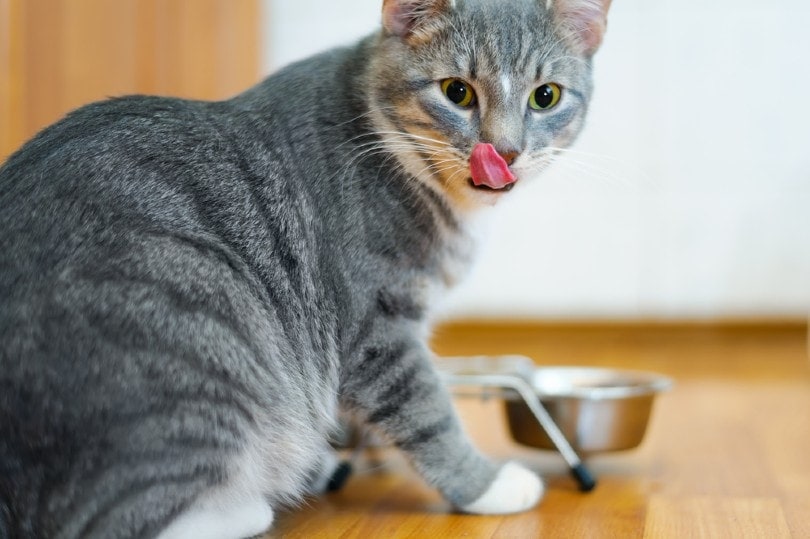
One common misconception is that pumpkin may help cats with vomiting and “settle their stomach.” However, there is no evidence that it performs that function. The added fiber may help with certain digestive problems, but it isn’t going to instantly stop any vomiting. For example, the fiber may help with hairballs, which may sometimes be mistaken for your cat vomiting.
In general, if your cat is vomiting to the point that you need to stop it, you should take them to the vet. Even if you stop their vomiting momentarily, the underlying problem needs to be discovered and diagnosed.
How Long Does It Take for Pumpkin to Work on Cats?
It can take anywhere from only a few days to a few weeks. It depends on what you’re trying to accomplish, as well as your cat’s specific health problems. If you’re using it to treat constipation, it may only take a day or two if your cat is only minorly constipated. On the other hand, it may take weeks for cats with a chronic problem.
Final Thoughts
Pumpkin is safe for cats to eat and may provide a few benefits. Mostly, pumpkin is included in cat food and treats for the added fiber, which can help with things like constipation. That said, pumpkin is not a miracle food that will fix all your cat’s problems. Its benefits are minor.
Pumpkin is relatively healthy for most cats, as long as the correct kind of pumpkin is used. It should be free of added sugar and flavorings. You want to feed your cat only pumpkin, not pumpkin with a bunch of things mixed in.
Generally, though, most cats don’t need pumpkin. If your cat is constipated, switching them to a wet food that is high in moisture will often help just as much (if not more) than pumpkin. We recommend speaking to your vet if you feel like your cat may benefit from adding pumpkin to their diet.
Looking for more tips on what your cat can eat? Check out:
- Can Cats Eat Tomatoes? What You Need to Know!
- Can Cats Eat Almonds? What You Need to Know!
- Can Cats Eat Ham? What You Need to Know!
Featured Image Credit: stevepb, Pixabay



